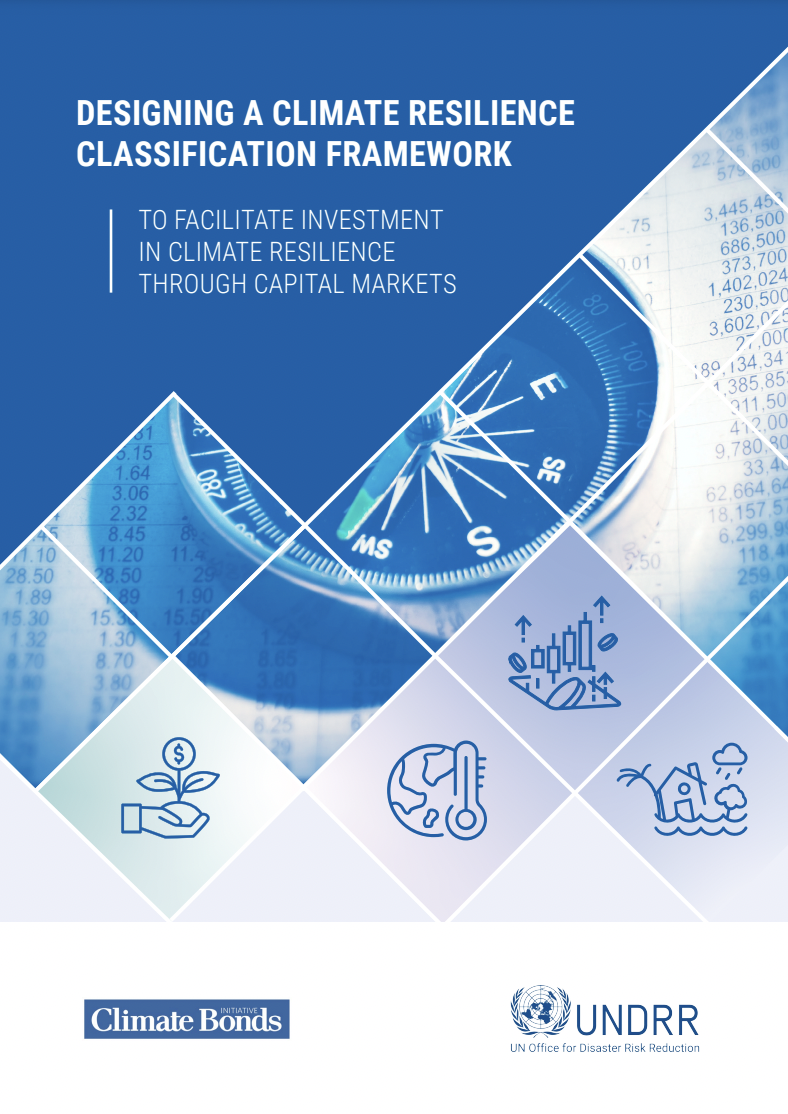
New Report builds the foundations of a resilience taxonomy to channel trillions into projects to defend against climate impact.
Climate Bonds has pioneered a taxonomy-based approach in sustainable finance over the last decade and turns its attention to resilience investment pipelines in the face of the climate challenge ahead. 
Climate Bonds has launched a new White Paper with the UNDRR to begin an ambitious journey hoping to unveil resilience investment pipelines to climate proof global infrastructure and help channel the necessary financing to these ends. The White Paper has been developed with the technical support of Cadlas.
We hope to see resilience investment being ramped up over the coming years and begin our journey by collaborating with experts to help us navigate the future of this vital project.
Resilience for a future of climate reckoning
Sixth Assessment Report on Climate Change published by the IPCC, approximately 3.3 to 3.6bn people live in settings that are highly vulnerable to climate change as ecosystems and people are becoming increasingly exposed to severe climate hazards (IPCC, 2022).
The United Nations Environment Programme (UNEP) estimates adaptation and climate resilience financing needs of up to USD300bn per year by 2030 in developing countries alone,[1] while global adaptation and climate resilience financing needs would be significantly higher. However, current reported finance flows for climate resilience are way below these estimated needs.
Of the 33,849 green, social, sustainable, and other labelled (GSS+) debt instruments recorded by Climate Bonds Initiative (Climate Bonds) at the end of 2022, 6,494 (19%) were identified as having some degree of climate resilience-related use of proceeds (UoP).
By setting out the parameters of resilience investing, a new chapter of climate finance transcending merely adaptation and mitigation can help finance vital changes to global infrastructure. The primary barrier preventing further resilience investment is the ambiguity over what resilience investing looks like. This paper marks the first step in removing this barrier.
Working in collaboration towards a resilience taxonomy
‘Resilience’ is defined as: ‘the capacity of interconnected social, economic and ecological systems to cope with a hazardous event, trend or disturbance, responding or reorganizing in ways that maintain their essential function, identity and structure’.
The White Paper sets out 7 climate resilience systemic themes: 1. Resilient Agri-Food systems; 2. Resilient Cities 3. Resilient Health 4. Resilient Infrastructure 5. Resilient Industry & Commerce 6. Resilient Nature & Biodiversity 7. Resilient Societies.
Through these climate resilience themes, the paper sets out the initial scope of a climate resilience pipeline, enabling enable investors and companies to identify resilience opportunities. The launch also calls for proposals and collaboration.
Climate Bonds, we firmly believe that achieving our mission requires collaborative efforts. In this spirit, we extend a special invitation to industry experts, scientists, and academics to join our esteemed working groups. Experts with a genuine passion for resilience are invited to contribute their expertise to this vital project by filling out the form here:
The organisation seeks advisory groups and individuals for the journey ahead. Don’t hesitate to contact us!
The Last Word
Sustainable finance has always been about helping capital steer itself towards providing real world solutions. The vulnerability of our people and infrastructure is another problem that requires solutions.
$5trillion of climate finance is needed per year by 2025 and resilience pipelines can join alongside adaptation and mitigation to reveal where finance is most need in this generational fight for the future.
Sean Kidney, CEO of Climate Bonds is passionate about the importance of developing resilience finance initiatives. Sean said: “The planet is set for a future of climate reckoning and we must be equipped with resilience solutions for diligent stewardship of the challenges ahead.”
“Arming the sustainable finance movement with a resilience taxonomy can best place us to channel capital to fight against our planet’s plight, alongside continuing efforts towards adaptation and mitigation.”
We’d like to thank UNDRR for their support in this project.
‘Til Next Time
Climate Bonds
[1] Adaptation Gap Report 2021; UNEP, 2021

